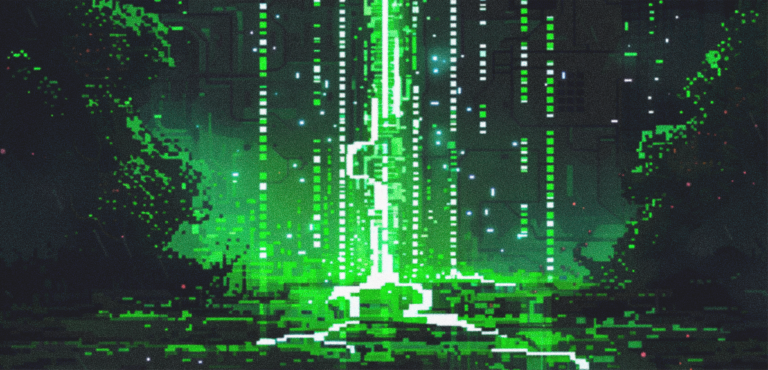
The Emergence of Li-Fi: A New Era of Wireless Communication
The relentless pursuit of faster, more secure, and efficient data transfer has been a hallmark of technological advancement. While Wi-Fi has long been the dominant force in wireless connectivity, a new contender is emerging on the horizon: Li-Fi.
The concept of using light for communication dates back centuries, with early forms like smoke signals and heliographs. However, the modern foundation for Li-Fi, or Light Fidelity, was laid in the early 21st century. Professor Harald Haas, a renowned researcher, introduced the term “Li-Fi” during a TED Talk in 2011, sparking global interest in the technology. His demonstration of high-speed data transmission using an LED lamp showcased the immense potential of Li-Fi.
Li-Fi, an acronym for Light Fidelity, is a revolutionary technology that leverages light, specifically from Light Emitting Diodes (LEDs), to transmit data. Unlike Wi-Fi, which relies on invisible radio waves, Li-Fi harnesses the visible light spectrum to create high-speed wireless networks.
What is Li-Fi?
Li-Fi operates by rapidly modulating the intensity of LED lights at speeds imperceptible to the human eye. These fluctuations carry encoded data that can be decoded by devices equipped with Li-Fi receivers. While Visible Light Communication (VLC) has existed for some time, Li-Fi represents a significant leap forward in terms of speed, capacity, and overall user experience.
The advantages of Li-Fi
Li-Fi offers a compelling set of advantages that could make it a game-changer in the world of wireless communication.
Blazing fast speeds: Li-Fi’s ability to leverage the vast bandwidth of the visible light spectrum enables it to achieve significantly higher data transfer rates compared to Wi-Fi. This makes it ideal for demanding applications like virtual and augmented reality, high-definition video streaming, and large file transfers.
Enhanced security: Li-Fi’s inherent security is a major advantage. Since light is confined to a specific area, it is significantly more difficult for unauthorized users to intercept data. This makes it highly resistant to hacking and eavesdropping, making it suitable for sensitive data transmission.
Reduced spectrum congestion: As the number of connected devices continues to grow, the radio frequency spectrum is becoming increasingly congested. Li-Fi operates on a different part of the electromagnetic spectrum, helping to alleviate this congestion and ensuring a more reliable wireless experience.
Energy Efficiency: Beyond data transmission, Li-Fi can contribute to energy efficiency. By integrating data transmission with LED lighting, it can optimize energy consumption.
Real-world applications of Li-Fi
The potential applications of Li-Fi are vast and varied, promising to revolutionize how we connect and interact with the digital world.
- Smart Homes: Li-Fi can create highly secure and responsive home networks, enabling seamless communication between IoT devices, smart appliances, and entertainment systems.
- Commercial spaces: Offices, retail stores, and public venues can leverage Li-Fi’s high speeds and capacity to deliver enhanced customer experiences, facilitate efficient operations, and support demanding applications like virtual and augmented reality.
- Industrial settings: In factories and warehouses, Li-Fi can optimize automation and control systems, improving productivity and safety.
- Transportation: The transportation industry, including aviation and automotive sectors, is exploring the potential of Li-Fi for high-speed, interference-free communication, enabling advanced features like in-flight entertainment, autonomous vehicle connectivity, and real-time data exchange between vehicles and infrastructure.
- Healthcare: Li-Fi’s potential to provide secure, high-speed, and interference-free communication makes it a promising technology for hospitals, clinics, and other healthcare settings. Applications include real-time patient monitoring, secure data transfer, and supporting medical devices.
- Education: Li-Fi can create immersive and interactive learning environments by providing high-speed connectivity for students and teachers. This can support online learning, virtual classrooms, and access to educational resources.
These are just a few examples of how Li-Fi can be applied across various sectors. As technology continues to advance, we can expect to see even more innovative and groundbreaking applications emerge.
Top Li-Fi companies
Several companies and research institutions are at the forefront of Li-Fi technology development.
- PureLiFi (Edinburgh, Scotland): A pioneer in commercializing Li-Fi solutions, PureLiFi offers a range of Li-Fi products and services.
- Signify (formerly Philips Lighting) (Netherlands): A global lighting leader, Signify is integrating Li-Fi into its lighting solutions.
- Panasonic (Japan): This electronics giant is actively involved in Li-Fi research and patent development.
- Oledcomm (France): Specializing in Li-Fi technology, Oledcomm provides solutions for various applications.
- Velmenni (India): Focused on Li-Fi-based street lighting solutions.
Additionally, numerous research institutions, including the University of Edinburgh, University of Strathclyde, and the University of California, Berkeley, are actively involved in Li-Fi research, driving technological advancements and exploring diverse applications.
Li-Fi challenges and the road ahead
While the prospects for Li-Fi are undeniably exciting, several challenges must be addressed before it can achieve widespread adoption.
- Dependence on light: Li-Fi’s reliance on light limits its use in dark environments. However, the increasing prevalence of LED lighting is mitigating this issue.
- Shorter range: Currently, Li-Fi has a shorter range compared to Wi-Fi, limiting its applicability in certain scenarios. Technological advancements are necessary to extend its range.
- Cost: While costs are decreasing, Li-Fi technology can still be more expensive compared to traditional Wi-Fi.
Despite these challenges, the long-term outlook for Li-Fi remains optimistic. As LED technology continues to advance and become more affordable, the barriers to adoption will gradually diminish. Coupled with ongoing research and development efforts to enhance Li-Fi’s performance and capabilities, the future holds immense promise for this transformative technology.
Distilled
Li-Fi represents a paradigm shift in wireless communication, offering the potential to redefine how we connect and interact with the digital world. With its unparalleled speed, enhanced security, and capacity to alleviate spectrum congestion, Li-Fi has the power to revolutionize industries and enrich our daily lives. While challenges remain, the ongoing advancements in Li-Fi technology and the increasing adoption of LED lighting create a promising path forward. As we embrace the convergence of light and data, Li-Fi has the potential to illuminate a new era of connectivity, unlocking unprecedented opportunities and transforming the way we experience technology.